It is said that no one in India can cut, tailor and finish a garment like Shahab Durazi- the King of Classics. But he is very cautious and a perfectionist, when he makes his creative moves. He reveals his thoughts on fashion in an exclusive interview with Meher Castelino for The Luxury Chronicle.
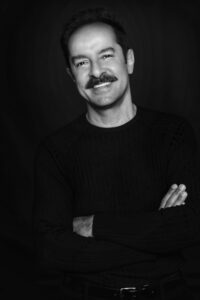
SHAHAB DURAZI
What is it about Shahab Durazi that the very mention of his name evokes sighs of admiration and spontaneous applause from fashion show audiences even before the unveiling of his collection? A tribute no doubt to his designing skills but there is more!
Despite the highly competitive ethos prevailing in the fashion industry, fellow fashion designers cannot stop singing his praises, and models vie to adorn his designs. Known as the fashion phenomenon, Shahab, very often crowned the ‘Armani of India’, didn’t always want to create breath taking ensembles. It was the automobile industry’s loss that turned into the fashion industry’s gain, when young Shahab decided to pursue the craft as he did not know which institute could teach him how to design a car in 1983.
He graduated from the Fashion Institute of Technology New York, with the Bill Blass and Harve Benard Critics Awards for technical excellence in garment construction – the only Asian student to get both. In 1988, he ended up selling woollen suits in May at Glitterati, one of Mumbai’s upmarket fashion stores. That is when Indian women realised the beauty of a perfectly, tailored jacket! Shahab’s mantra has always been that he wants the women in his creations to be noticed.
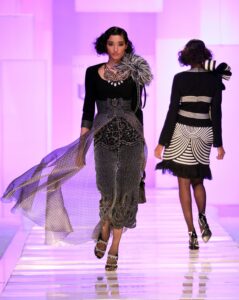


How do you see the present fashion scene in India compared to when you started?
Indian fashion today is far more organised than when I started back in 1988. It’s geared more for business and has a tremendous reach. Having said this, the approach is commercial, diluting the quality of designs and products simply to pander to an existing potential market. It’s faster paced and hence compromises on aesthetic and artistry.

DIANA PENTY

AISHWARYA-RAI-BACHCHAN-

DEEPIKA PADUKONE
You have been very consistent in your approach for your brand, away from the limelight, fashion weeks, elusive to journalists, and disdainful of the popular brand building gimmickry (film stars and their stylists); proclaiming it all resonates with your personality and sensibilities. There is a shift in the pattern in recent times. What has changed? The markets or Shahab Durazi?
I strongly adhere to all the values and beliefs around, which I built my brand. It has come to stand for remarkable quality and aesthetics. In recent years my social media presence is perceived as different from my past beliefs. This is completely untrue. The purpose of social media is to expand one’s reach and if content is positioned to reach that optimum then the purpose is served. One cannot choose to be on social media and shy away from presenting one’s self to the target audience. Change is the only constant and anyone averse to change is regressing.
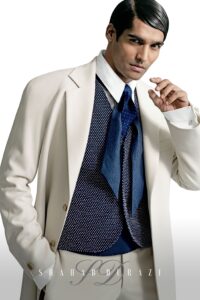
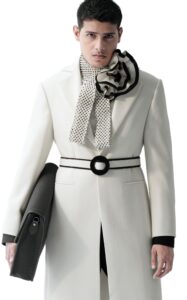
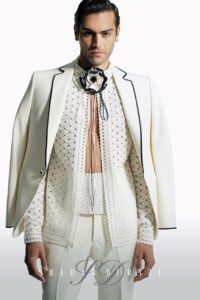 Did the pandemic affect your business and creativity and how did you survive during the three years?
Did the pandemic affect your business and creativity and how did you survive during the three years?
The pandemic certainly affected business considerably. We were closed for months and sales suffered. There was never a compromise on creativity though. When we restarted, we maintained all creative standards and our credibility was intact.
You are a perfectionist in whatever you do. Will you include circularity and inclusiveness in your designs?
The brand DNA is very distinctive. Inclusivity has always been our aim but not if it compromises the brand language and philosophy.

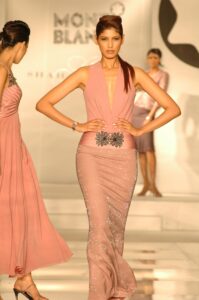
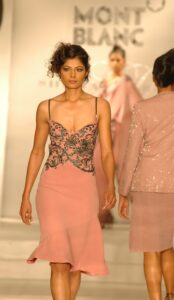
It is believed that customers must fit into your sizing concept and not the other way around. Your comment on it and the rush to dress the plus size buyer?
Completely untrue! These are long standing misconceptions that need to be quashed. We cater to all sizes. Of course, our sample collections are standard sizes but we customise to all sizes. Having said this, I reiterate that if a certain style is inappropriate for larger sizes we suggest a shift in design or offer alternatives. This however does not mean we don’t provide large size couture. The very concept of couture is to customise, not just to size but tastes as well and our brand has been a front runner in providing the service for over three decades.
You are very active professionally and personally on social media. How has it helped you on both counts?
Social media has helped me connect with friends and clients. It’s an easy way to stay in touch and keep others abreast of my professional and social calendars. I must add, I always try to use social media in a positive context. My audience appreciates my content and remain engaged because they feel there’s always a social message to my personal posts. Shouldn’t that be the purpose of such a social platform? I post meaningful content that people can relate to and sometimes imbibe in their daily lives. It is a way of giving back no matter how small the gesture.
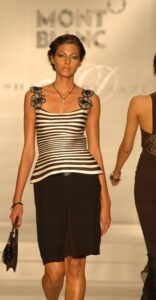
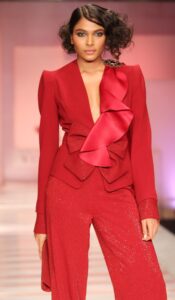
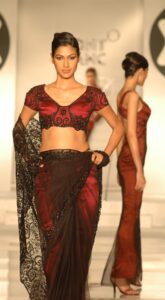 Your last collection at the FDCI x LFW was a return on the ramp after over a decade. How did it help you after such a long sojourn?
Your last collection at the FDCI x LFW was a return on the ramp after over a decade. How did it help you after such a long sojourn?
My last collection at Lakmé Fashion week was a return to the ramp after a hiatus of 12 years. The sole purpose was to engage with my contemporary audience who hasn’t even heard of my brand. It was Mr. Sunil Sethi’s brainchild to present a retrospective of my work spanning three decades or more. Although the capsule was restrictive by time and numbers, we tried to present SHAHAB DURAZI to a host of people who had never viewed my craft in a live presentation. It helped establish the essence of what couture should really be and promote the concept of slow fashion, especially after a long pandemic that pushed the industry into a slumber of sorts.
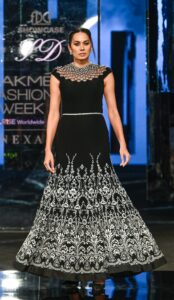
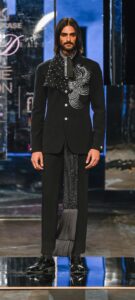
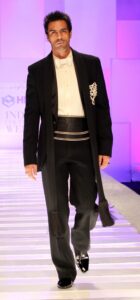
ARJUN RAMPAL
You are now concentrating also on men’s wear but there is a marked difference in the look from your past designs. It appears to be slightly more unisex and aimed at the young Gen Z buyer. Your comment on this move?
I am propagating menswear with a new rigour. The reason for this is the brands neglect of a potential segment that could translate into business. Although the viability was uncertain, the resolve was to do something radically different. We opted for a theatrical dandy vibe and cleverly incorporated elements that progressively promoted gender fluidity and unisex or androgynous fashion. The collection was very well received and applauded for its sharp aesthetic and impeccable tailoring; both DURAZI hallmarks.
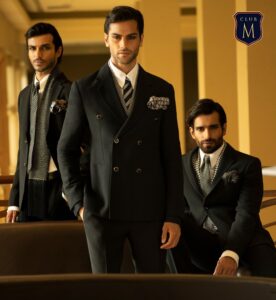
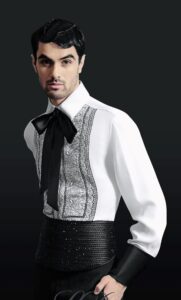
Will the sophisticated male buyer take a back seat?
The sophisticated male buyer lapped up our Dandy collection with as much enthusiasm as it did with past collections. The collection was sophisticated albeit sexy. A rare combination when it comes to Indian menswear.
You are known as the ultimate, classic, western wear designer. You created some saris in the past. How do you see Indian traditional wear as part of your collection?
We do an equal balance of Indian and western couture. Simply because we choose to showcase mostly the western collections, doesn’t mean we don’t do traditional or Indian bridal clothing. A large part of our business revolves around customised Indian bridal wear and we propose to continue with the tradition.
It is believed that you rarely meet your customers and get the details from your assistants. How does that work for you and have there ever been any problems because of this method?
This is completely untrue. This is yet another misconception from the past. I meet every single client who walks in for a customised order. It is working beautifully, as clients can share and discuss their preferences and the process helps achieve an end product as close to the customers heart as envisaged.
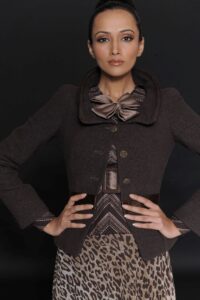
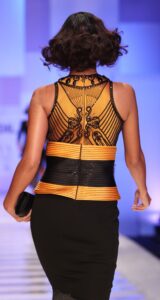

There is a rush to show on the foreign ramps by Indian designers. Any thoughts on that for your creations?
There is no rush or urgency to showcase on international ramps. If it is meant to happen, it will. If not, nothing is lost. I would however like to reiterate something I have said several times before. As an industry why do we look to western platforms for validation and approval. Indian fashion is growing and apart from addressing a new audience, the credibility of Indian platforms is equally justified.
 What are your thoughts on the future of Indian fashion?
What are your thoughts on the future of Indian fashion?
We need to corporatise fashion. There has been some headway in this respect, and I am hoping more brands get acquired and absorbed by corporates. My only concern is brand identities shouldn’t get diluted in the need to commercialise and reap financial returns. The purpose should be to uplift the quality and maintain fair practices to ensure the brand is optimised creatively and commercially.
Your thoughts on the future of western fashion since bizarre looks and creativity were seen at the recent Paris Fashion Week?
There must always be a business purpose to fashion. Presenting Avant Garde fashion to catch eyeballs is momentary and to translate the big ideas into big profits, the brand can draw inspiration from its couture collections and fine tune and tweak the collection to get the cash registers rolling. What is the point of fashion without financial gain? Survival comes at a cost. That cost needs to be calculated and controlled so brands achieve an equilibrium between ethos and earnings.
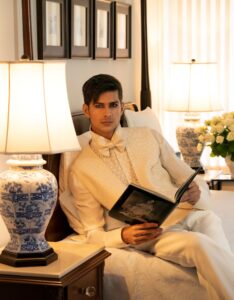 How do you feel about the rapid acquisition of stakes of leading Indian designers by corporates like Reliance Brands and Aditya Birla Fashion and Retail?
How do you feel about the rapid acquisition of stakes of leading Indian designers by corporates like Reliance Brands and Aditya Birla Fashion and Retail?
Brilliant! Simply brilliant… provided the brands are not suffocated for commercial gain.
What would your advice be to the young designers on brand building in these times of digital fatique and over exposure?
Work on your product. Find your USP. Exploit it cleverly. Stay focused on a specialised product. Evolve with time. Engage with your audience.
The Shahab Durazi boutique is reminiscent of some of the exclusive ateliers in Italy, some having their children taking forward their legacy. Please share your vision for the future of your brand.
Only time will tell.
